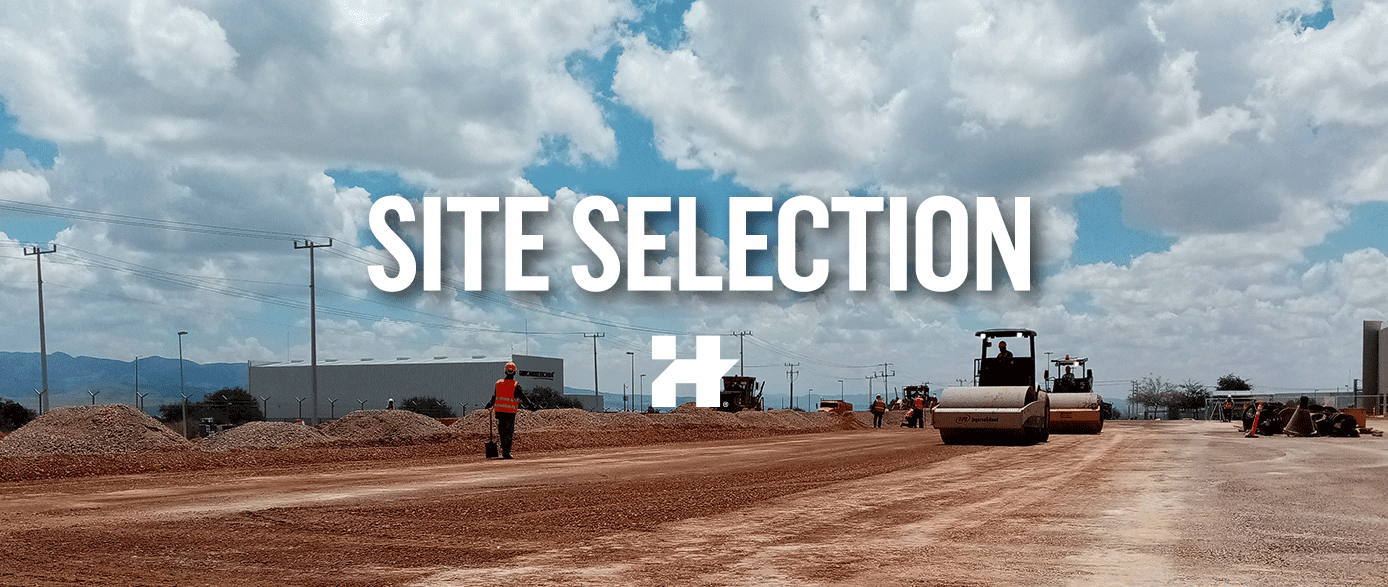
Correct site-selection can save you from a long list of forthcoming setbacks. The location of your project can have a direct impact on costs, logistics, and overall future stability. For this reason, it is not a step to be taken lightly. It is even more crucial when establishing in a foreign country. So, the question is: What do you need to know to make an informed technical decision?
There are gazillions of data from multiple sources available that can turn this process overwhelming really fast. For this reason, it is a good idea to work with someone with extensive experience and local knowledge within the country where you want to expand. However, we think the key relies on understanding the process, even when you have an ally to delegate this task.
Without a doubt, it is a complex and variable operation. Site selection can vary across industries, locations, and goals. By no means this is an extensive how-to post, but a guide to get you through the process. We will divide it into two approaches: technical and traditional.
The former involves the location’s specific attributes like soil and services, while the latter focuses on analyzing location and connectivity. The two are equally important for achieving success in site selection in Mexico.
Technical Approach
As said, you can actually save money when selecting the right location.
Going technical means being aware of the future costs that may arise based on the site’s current state. You will need to analyze:
- The physical characteristics of the property.
- Conduct studies on soil mechanics, topographic survey, hydrological study, traffic study, and such.
- Pre-feasibility studies of the available utilities (electric, water, drainage, and natural gas).
- Include cost estimates for mass grading and foundations of the building.
As a result, you will end with a more accurate financial model and return of investment of the project in a determined location, before making any decision
Traditional Approach
At this point, the goal is to review some of the most traditional aspects for location: Connectivity, infrastructure, labor, and real estate.
City Selection
General
You can narrow your search by focusing on your market and distribution needs. For example, when the U.S. is your main market, a proximate location with adequate logistics and connectivity would be ideal. Or if you are exporting overseas, your options can narrow down to cities with a port. Once you have a list, you may review some of the most common metrics to evaluate how adequate a city is for your business, such as:
- Demographics
- Location and size
- Wages of competitors
- New projects developed in the city, expansions, and closures
- Applicable federal, state, and city tax rates, as well as other permits and licenses
- Government incentives and support programs
- Types of construction and manufacturing Unions
Connectivity and Infrastructure
You need to analyze transportation and infrastructure for optimizing logistics and new-client attraction. By reviewing the availability of highways, railroads, and airports to your distribution plans, as well as customers and suppliers, you can get an idea of your transportation and logistics costs.
Labor Force
Having the right workforce is crucial for success. That’s why you need to dive into data such as:
- Education of the population
- Historic unemployment rates
- Technical schools, colleges, and universities in the area
- Wage rates
- Local Unions
- Skills available and turnover ratio
You need to evaluate your industry’s development in the area. If it is too small, many manufacturers may bid against each other for talent. Or maybe, your industry is too new for the market, and you’ll need to develop your workforce from scratch.
In the end, you must select a city considering skilled labor, low turnover ratio, productivity, quality, local technical schools, and availability.
Real Estate
There are world-class facilities in Mexico, just as in the U.S., you just need to find them. At this stage, you may have narrowed it down to 3 or 4 cities. Now the decision relies on:
- Buying or leasing an existing property
- Buying or leasing a built-to-suit industrial facility
In addition to the latter, the location must also serve your workforce. You need a city with adequate local services nearby, such as transportation, schools, and housing.
Finding an ideal industrial location in Mexico is complex. Finding an ideal industrial location in Mexico does not have to be complex. And in reality, there is no right or wrong approach to it. There are just advantages and disadvantages vs. the financial plan of the company.
Our recommendation is always to go with companies with proven experience.
Wrapping Up
In the end, a lot is going on when selecting a site in Mexico. The best way to succeed is to go with the proven method. As part of our pre-construction services, we offer site selection consulting to every international client that requires it.
We focus on giving technical feedback on the property, in particular, in defining the possible costs of earthworks, infrastructure, and providing ROM (rough order of magnitude) of the investment. Also, we focus on carrying out pre-feasibility of the available utilities, providing conceptual designs and “localization” to Mexican standards. Moreover, we support conducting studies of each property. We always keep in mind the costs and benefits of our clients, in order to give the best possible solutions from a technical view.






